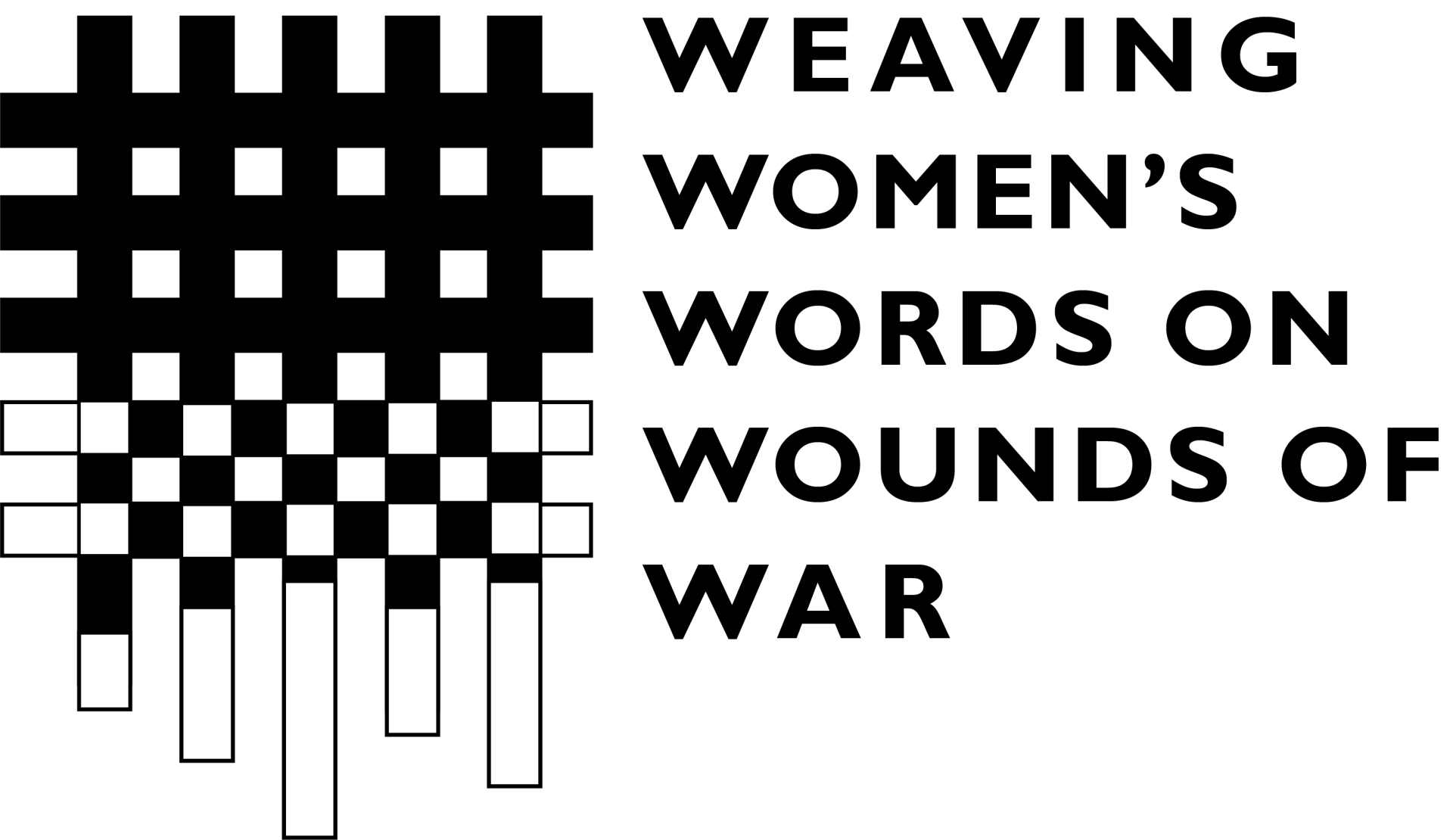
The en-graved seventy-plus:
Amplification
The en-graved seventy-plus:
Amplification
2022
Autobiographical recollection, digital architectural rendering,
acrylic and wood architecrutal modeling,
embroidery and installation
Karl Castro (concept, concept development and artwork creation), Fatima Nagli, Amalia Nagli, Kadir Nanding, Theng Nagli, Samir Nagli, Taga Baluno Mamaluba, Samerudin "Olivo" Esmail Nagli and Labaya Ali Baliwal (autobiographical detail), Mambai Sapalon (autobiographical detail and names of victims), Marian Pastor Roces (concept and concept development), Sara Rivera (concept development and videography), Eldry John Infante (architectural design and rendering), Yman (enshrouding), Raissah Cayoga-Mocsin (research and analysis), Alan Mocsin, Helizah Musa, Junaira Sawal and Paul Formaran (translation), Tun Abdulrahim Sansaluna (liaison), Maria Fe P. Quiroga (curatorial assistance), Maricel Hilario-Patiño (project administration and anthropological insight), Unos Samama (consultant), Delab Collaborative, Inc. (mosque model fabrication), VC Trading (textile printing and embroidery), Arnold Diano, Archie Opeña, Jaypee Gotera, Agnes Nantiza and Noralen Johnson (installation)
MORE THAN SEVENTY BODIES WERE
COVERED WITH EARTH WHERE THEY FELL
DURING THE MASS MURDER AT
THE MOSQUE IN THE SMALL VILLAGE OF
MANILI IN COTABATO, ON 19 JUNE 1971.
THESE PARAMILITARY TROOPS MADE UP
OF VOLUNTEERS FROM AMONG
CHRISTIAN SETTLER POPULATIONS WERE,
AT THIS TIME, SOWING TERROR
THROUGH CENTRAL MINDANAO.
The mosque, in which they were slain in
horrific repetitions of gunfire and
grenade volleys, no longer exists but for
a low U-shaped exposed wall of hollow blocks,
showing the three perimeter lines of
what used to be an attractive open-air structure.
The men, women, and children who
perished were a large segment of
the Muslim residents of Manili—
an obscure village even today—
who were subject to a
thoroughgoing extermination campaign
waged by a group self-named ilagâ.
THE ILAGÂ KILLED HORRIFICALLY.
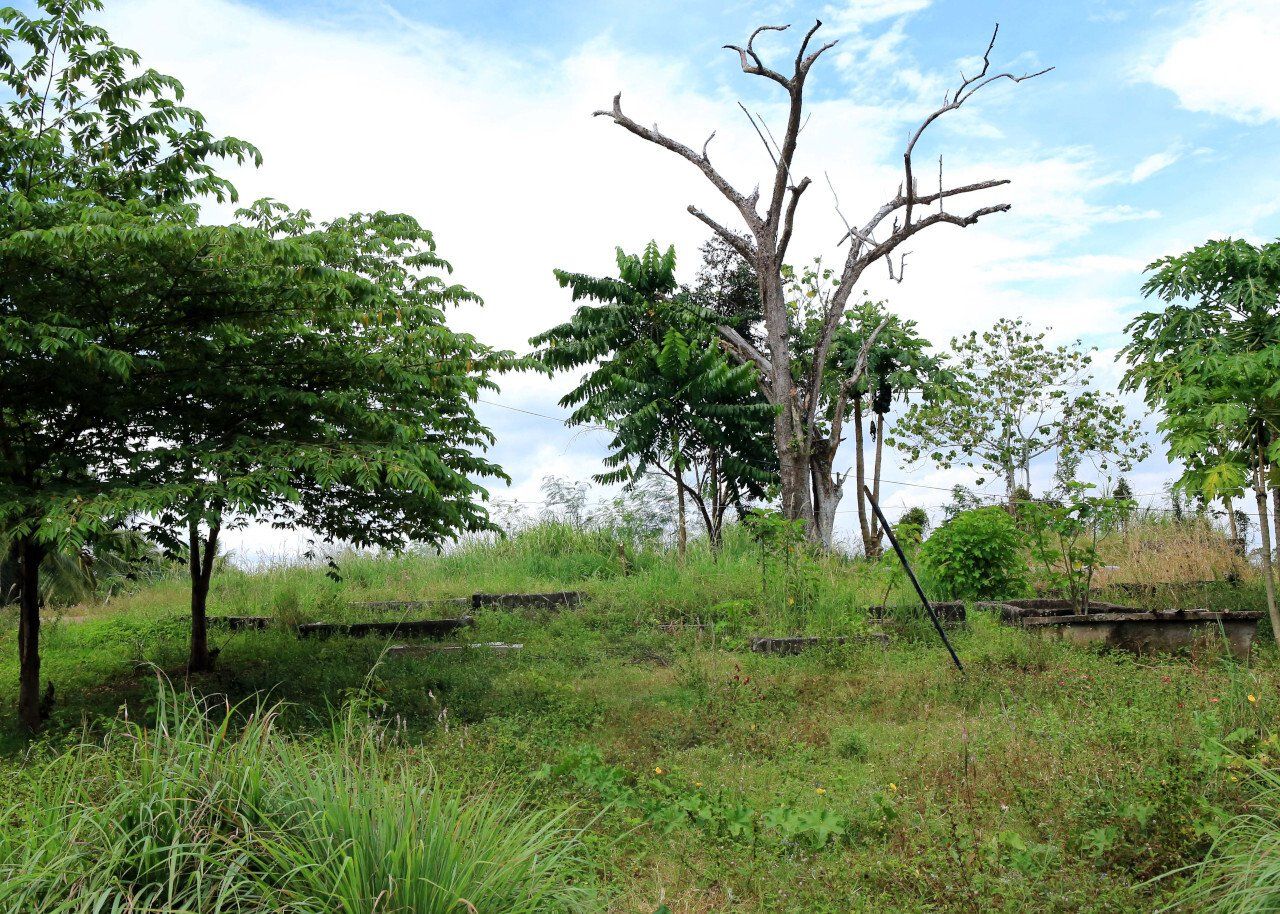
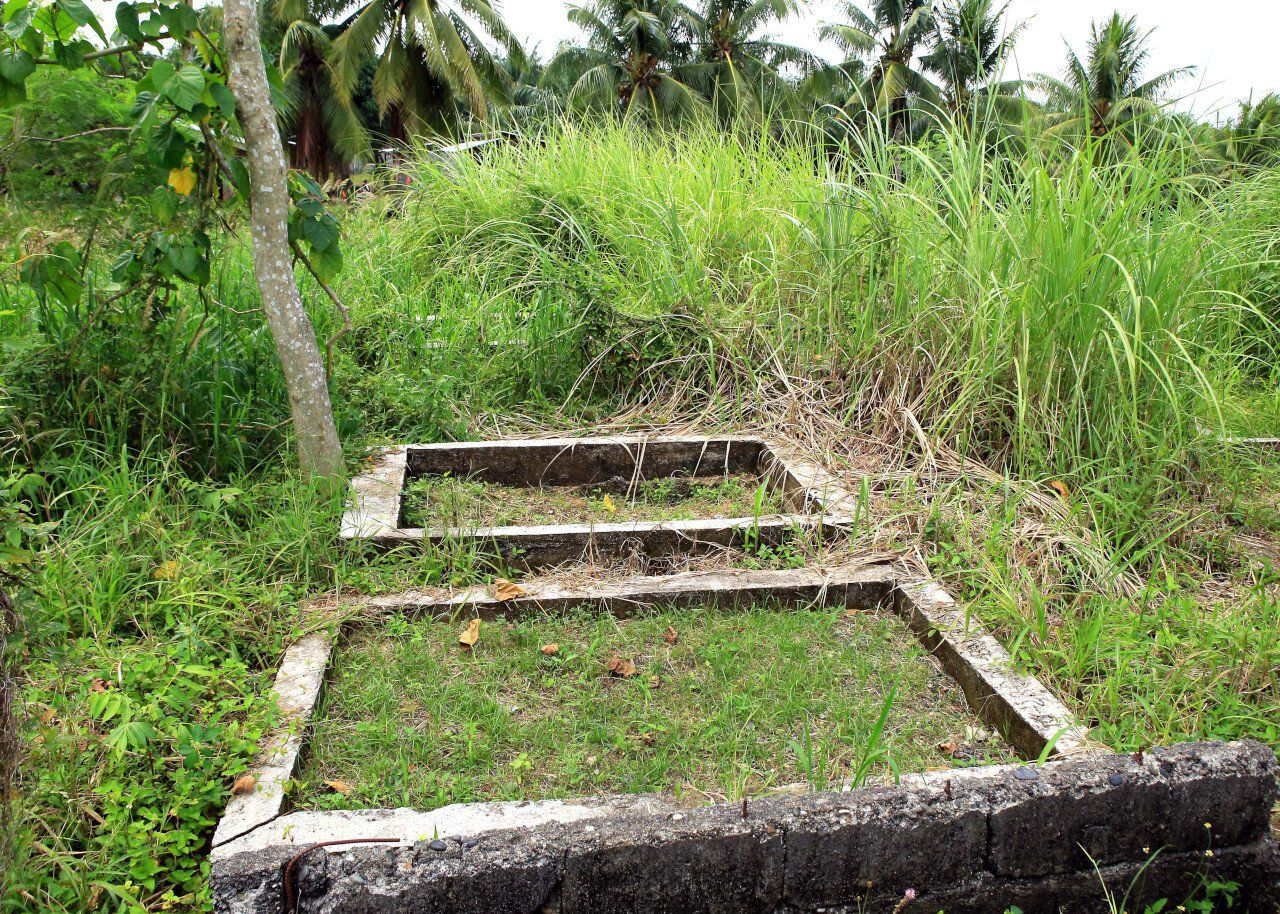

VIEWS OF THE SITE OF THE NOW-DEFUNCT MOSQUE WHERE THE MASS MURDER OF MORE THAN 70 PEOPLE OCCURRED; ONE REMAINING WALL STILL BEARS THE BULLET HOLES FROM THE INCIDENT.
The
-plus:
seventy
Amplification
en-graved
The en-graved
Amplification
seventy-plus:
MORE THAN SEVENTY BODIES
WERE COVERED WITH EARTH
WHERE THEY FELL DURING
THE MASS MURDER AT THE MOSQUE
IN THE SMALL VILLAGE OF MANILI
IN COTABATO, ON 19 JUNE 1971.
The mosque, in which they were slain in
horrific repetitions of gunfire and
grenade volleys, no longer exists but for
a low U-shaped exposed wall of hollow blocks,
showing the three perimeter lines of
what used to be an attractive open-air structure.
The men, women, and children who
perished were a large segment of
the Muslim residents of Manili—
an obscure village even today—
who were subject to a
thoroughgoing extermination campaign
waged by a group self-named ilagâ.
THESE PARAMILITARY TROOPS
MADE UP OF VOLUNTEERS FROM AMONG CHRISTIAN SETTLER
POPULATIONS WERE, AT THIS TIME,
SOWING TERROR THROUGH
CENTRAL MINDANAO.



VIEWS OF THE SITE OF THE NOW-DEFUNCT MOSQUE WHERE THE MASS MURDER OF MORE THAN 70 PEOPLE OCCURRED; ONE REMAINING WALL STILL BEARS THE BULLET HOLES FROM THE INCIDENT.
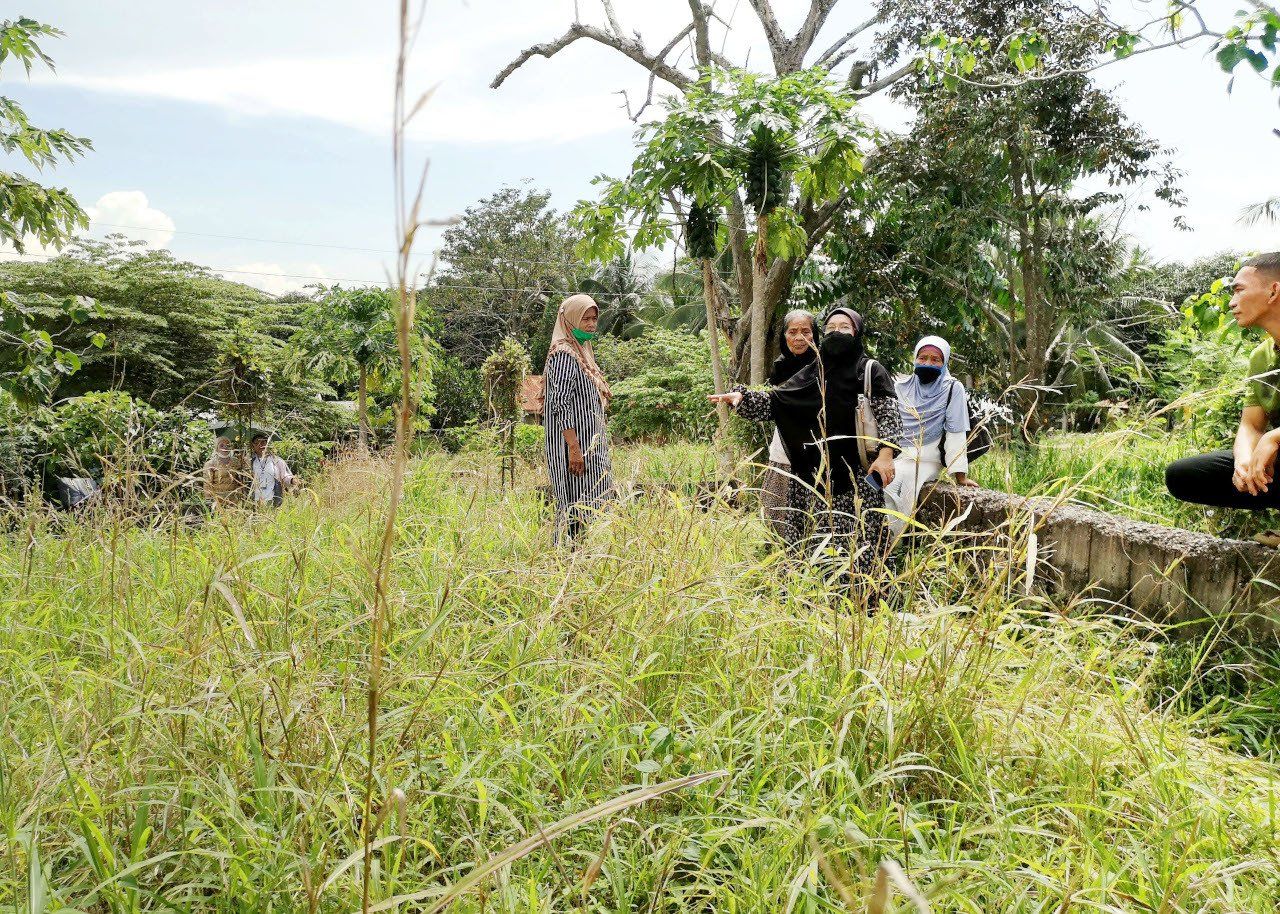
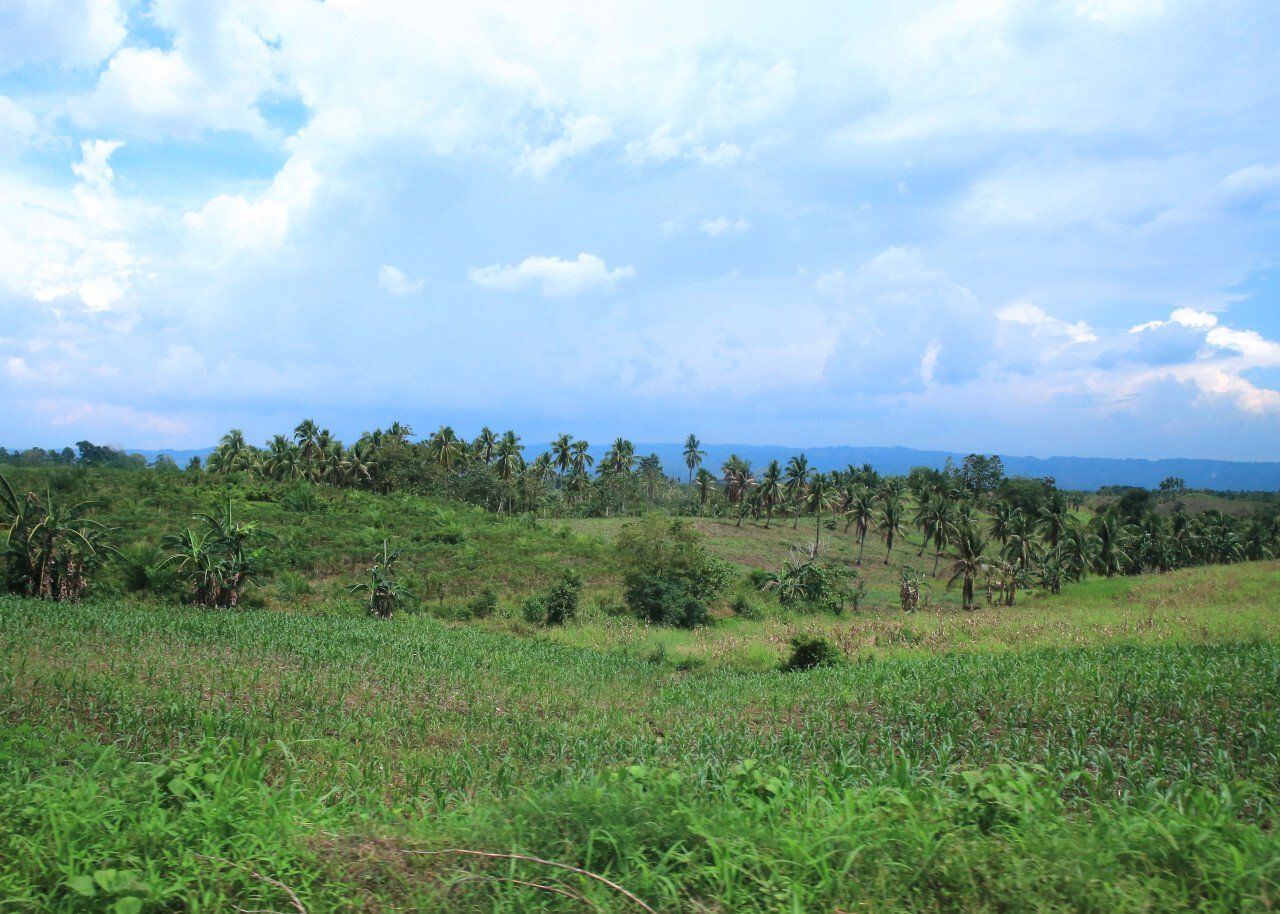
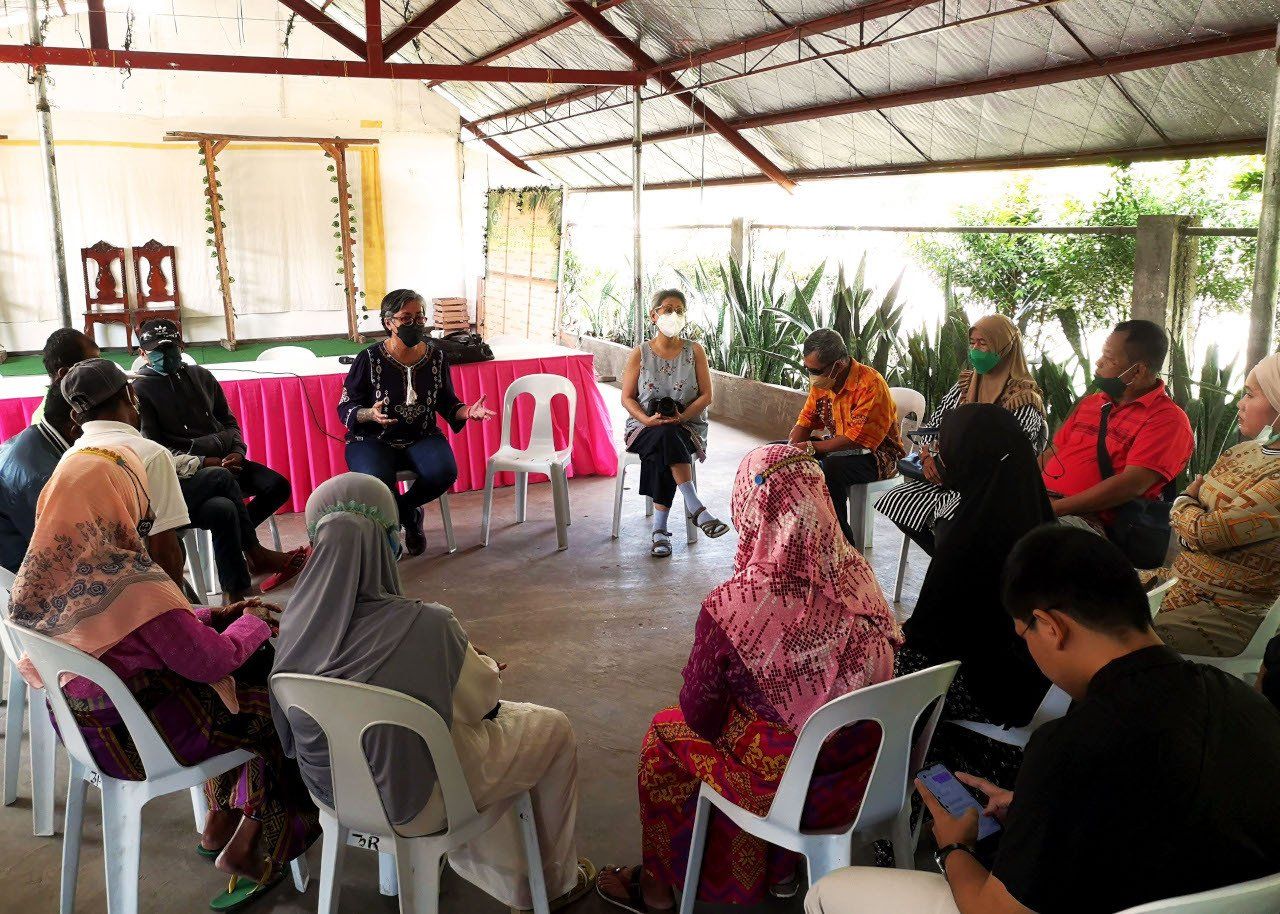
THE WOMEN OF MANILI AT THE SITE OF THE NOW-DEFUNCT MOSQUE WHERE THE MASS MURDER OF MORE THAN 70 PEOPLE OCCURED.
VIEW OF MANILI IN CARMEN TOWN, COTABATO.
PROJECT PROPONENT DIRECTOR PROF. MA. LOURDES VENERACION-RALLONZA (CENTER LEFT) AND CURATOR MARIAN PASTOR ROCES (CENTER RIGHT) HOLDING A GROUP DISCUSSION WITH THE COMMUNITY IN MANILI.
The last demand concerns ongoing,
if for the moment sporadic,
military action in their general vicinity—
once more on the pretext of their
harboring extremists. To them, the massacre
of half a century ago is not merely
the blind spot in the national imagination.
Its potential repeat today
and in the future is not at all prevented by
circumstances that seem all too familiar.
The artwork is an evocation of the perimeter
of the mass grave, and a reconstitution
of the disappeared mosque.
IN THEIR TERMS, THIS MEANS
RECOGNITION OF THE MASSACRE,
SOME FORM OF RECOMPENSE,
AND DEMILITARIZATION TODAY.
THE MANILI WOMEN WHO COLLABORATED IN THIS PROJECT HAVE A SINGLE MESSAGE: JUSTICE.
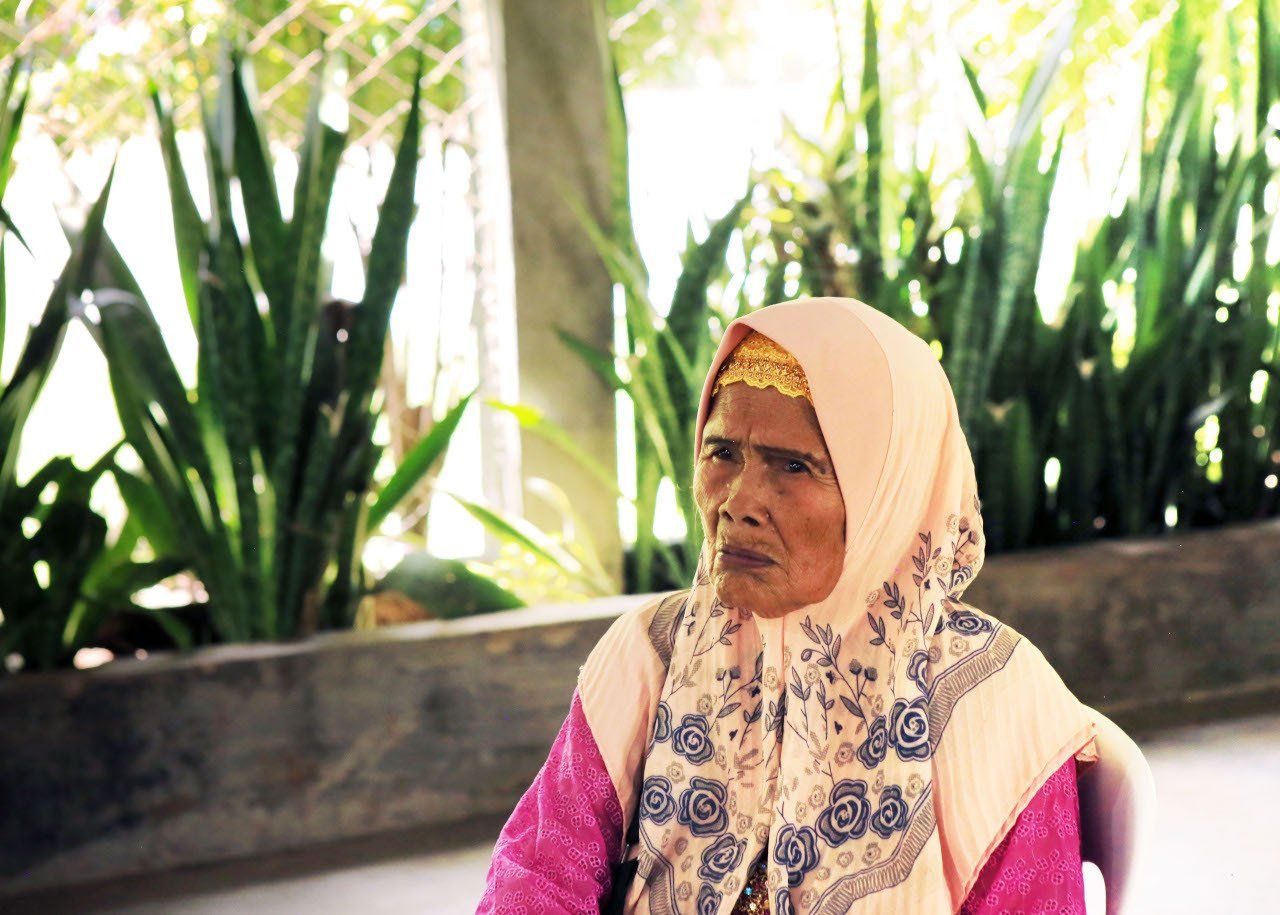
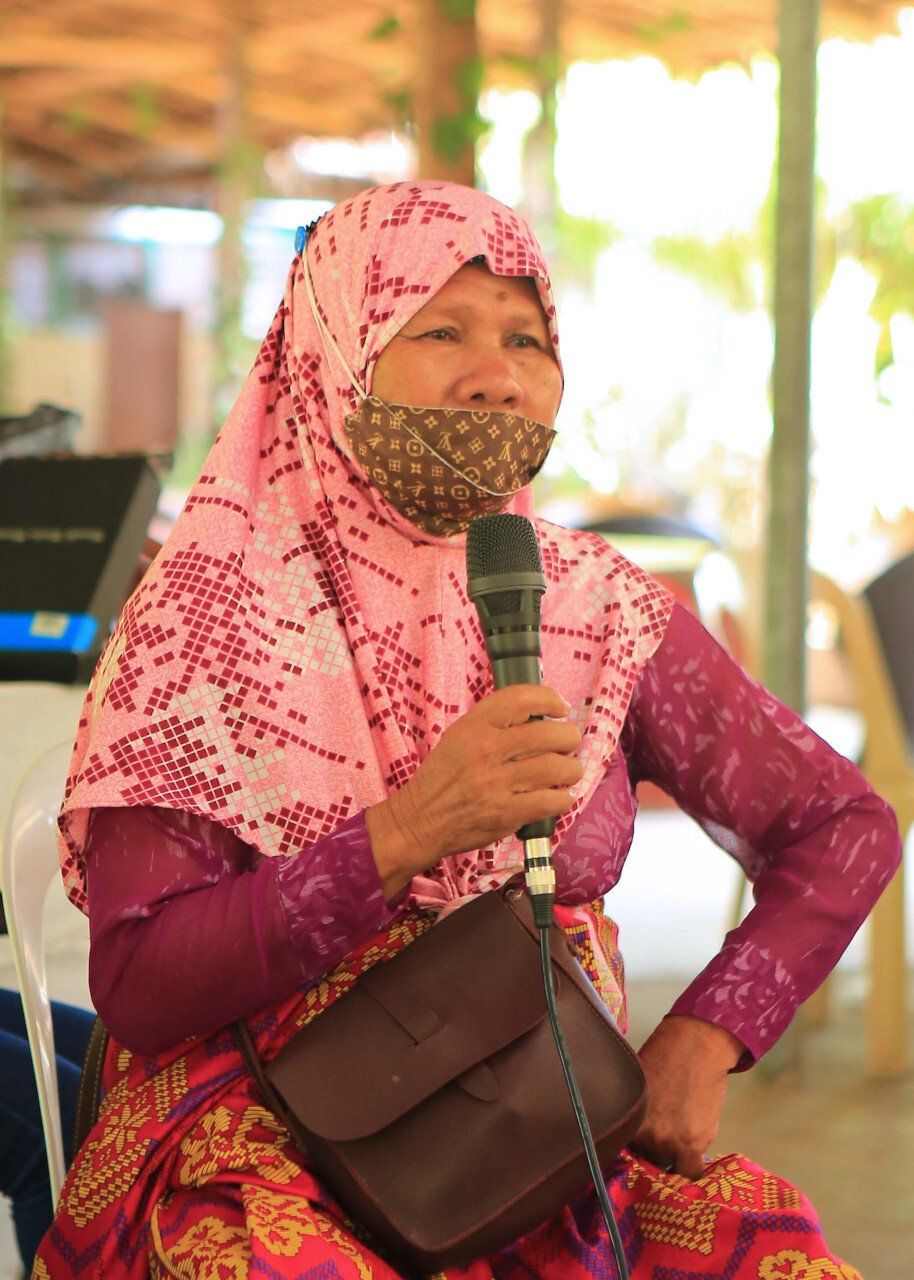
THE WOMEN OF THE MANILI COMMUNITY.
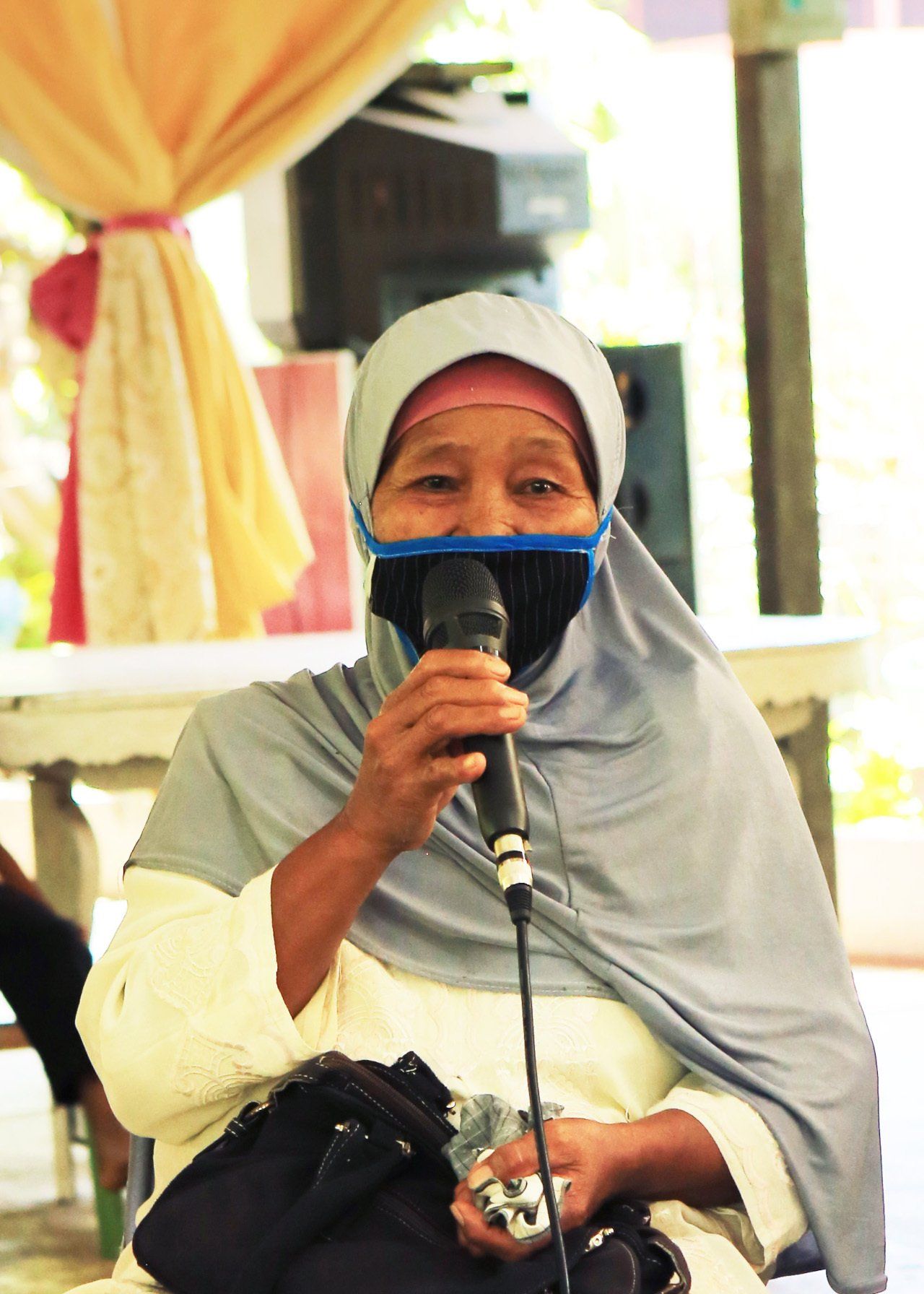
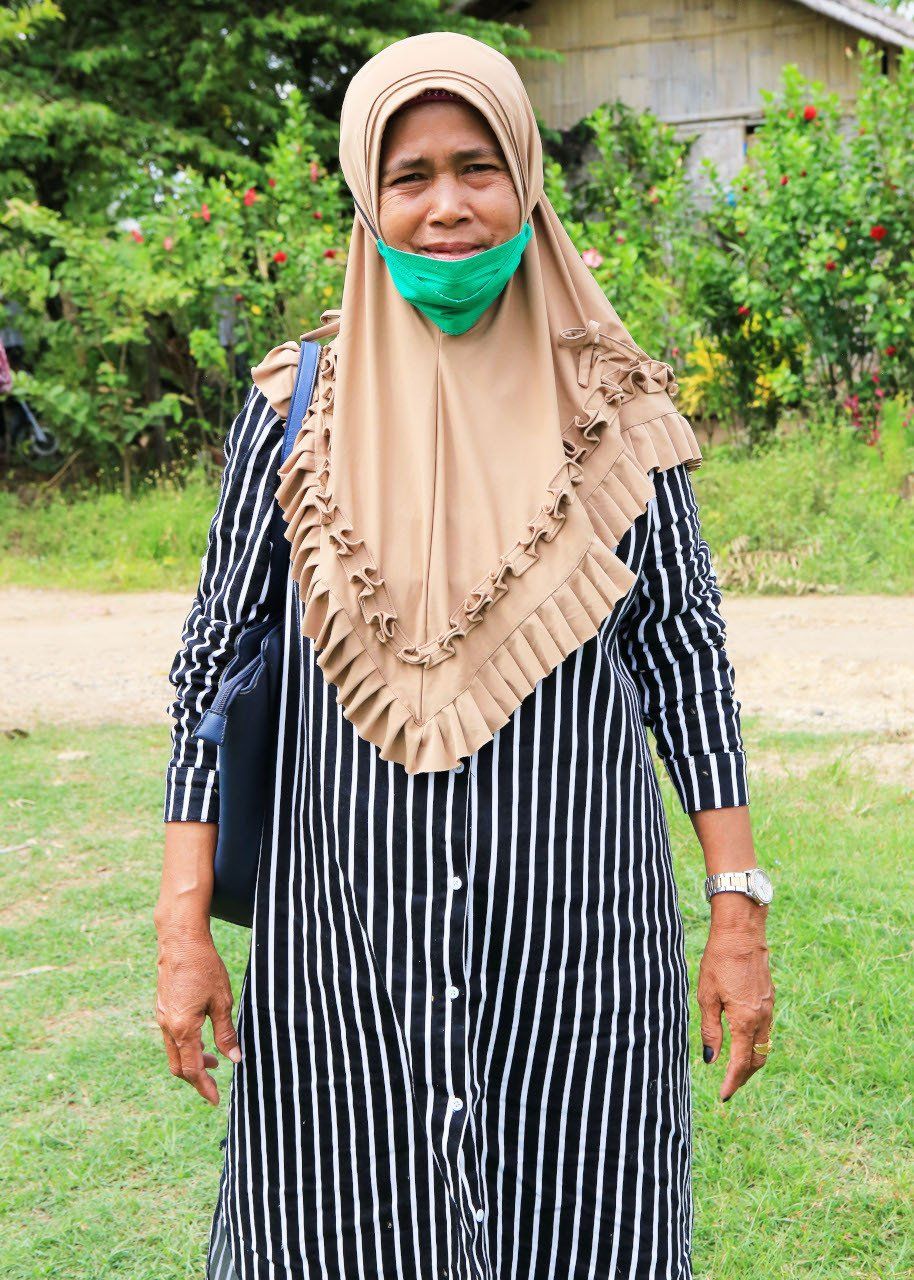
Body mutilation and some
cannibalism were involved
in what clearly were terror tactics.
Muslims were defiled many times over,
from attacks on ancestral domain
to outright massacres, to torture,
and to the consumption of their flesh.
It is unknown if the massacre at Manili
was conducted with these dark
flourishes; but it is certain that the
ilagâ conducted the murders with
Philippine Constabulary elements.



THE WOMEN OF MANILI AT THE SITE OF THE NOW-DEFUNCT MOSQUE WHERE THE MASS MURDER OF MORE THAN 70 PEOPLE OCCURED.
VIEW OF MANILI IN CARMEN TOWN, COTABATO.
PROJECT PROPONENT DIRECTOR PROF. MA. LOURDES VENERACION-RALLONZA (CENTER LEFT) AND CURATOR MARIAN PASTOR ROCES (CENTER RIGHT) HOLDING A GROUP DISCUSSION WITH THE COMMUNITY IN MANILI.
The last demand concerns ongoing,
if for the moment sporadic,
military action in their general vicinity—
once more on the pretext of their
harboring extremists. To them, the massacre
of half a century ago is not merely
the blind spot in the national imagination.
Its potential repeat today
and in the future is not at all prevented by
circumstances that seem all too familiar.
The artwork is an evocation of the perimeter
of the mass grave, and a reconstitution
of the disappeared mosque.
IN THEIR TERMS, THIS MEANS
RECOGNITION OF THE MASSACRE,
SOME FORM OF RECOMPENSE,
AND DEMILITARIZATION TODAY.
THE MANILI WOMEN WHO COLLABORATED IN THIS PROJECT HAVE A SINGLE MESSAGE: JUSTICE.


THE WOMEN OF THE MANILI COMMUNITY.


Body mutilation and some
cannibalism were involved
in what clearly were terror tactics.
Muslims were defiled many times over,
from attacks on ancestral domain
to outright massacres, to torture,
and to the consumption of their flesh.
It is unknown if the massacre at Manili
was conducted with these dark
flourishes; but it is certain that the
ilagâ conducted the murders with
Philippine Constabulary elements.
CONNER APAYAO
BALBALAN
BALENCIAGO MASS BASE
TOMIANGAN
NAPOCOR CAMP
NANENG MASS BASE
CAGALUAN MASS BASE
TANAP MASS BASE
MALUCUSOD MASS BASE
BASAO MASS BASE
BATONG BUHAY MASS BASE
MOUNT BINULUAN
HELD THE CORDILLERA
MASS PLENUM IN 1984
PLANNING OF SPLIT
MOUNT BINULUAN SIKUU'
MALLANGA
SUMADEL MASS BASE
PAY-ONG BANGAD
FULISONG BANGAD
BANGAD MASS BASE
TINGLAYAN
DANANAO MASS BASE.
MARKS BY JUANITA CHULSI AND
JUANITA D. CABABA
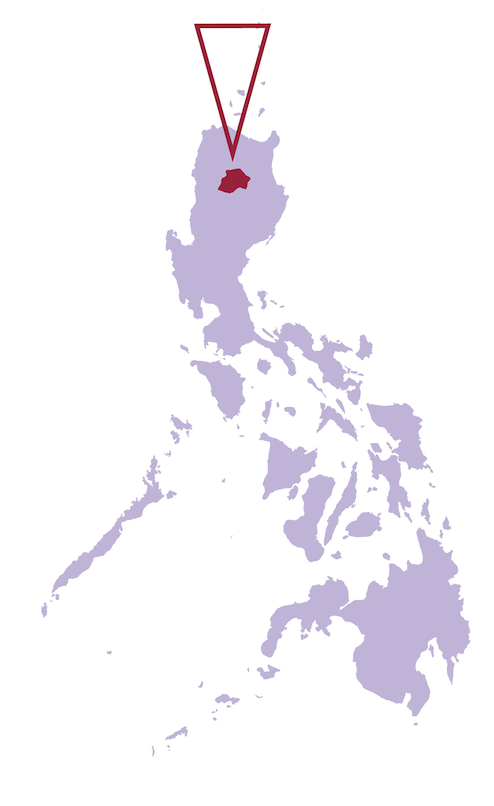
BITUAGAN
SADANGA
BELWANG MASS BASE
BUGNAY
BUGNAY GATE
MOUNTAIN BETWEEN
BASAO AND BUGNAY
BASAO
CHICO RIVER
NGIBAT
BUTBUT PROPER
LOCCONG
BUSCALAN
MOUNT CHUMANCHIL.
A
B
C
D
E
F
G
H
I
J
K
L
M
A
B
C
D
E
F
G
H
I
J
K
L
M
N
O
P
Q
R
S
T
MARKS BY TINA BALWEG,
CAROLYN GAMBOA AND
MANDING TAYAB
THE SMALL VILLAGE OF MANILI WWAS BUT ONE STOP IN
THE LONG TRIAL OF THE ILAGÂ — A GROUP OF
CHRISTIAN SETTLERS AND CONSTABULARY MEN WHO
VOLUNTEERED IN RITUAL, BRUTAL EXTERMINATION OF
MUSLIMS ACROSS THE VASTNESS OF CENTRAL
MINDANAO AT THE TIME OF MARTIAL LAW.
THE SURVIVORS DESCRIBE A SPACE OF VIOLENCE THAT
IS IN AND BEYOND MANILI, AS THEY RAN BLOODIED
AND WOUNDED TO NEIGHBORING VILLAGES,
ONLY TO FIND THE SAME KIND OF CARNAGE.
THE SMALL VILLAGE OF MANILI WAS
BUT ONE STOP IN THE LONG TRIAL
OF THE ILAGÂ — A GROUP OF
CHRISTIAN SETTLERS AND
CONSTABULARY MEN WHO
VOLUNTEERED IN RITUAL,
BRUTAL EXTERMINATION OF
MUSLIMS ACROSS THE VASTNESS OF
CENTRAL MINDANAO AT THE TIME OF
MARTIAL LAW.
THE SURVIVORS DESCRIBE A
SPACE OF VIOLENCE THAT
IS IN AND BEYOND MANILI,
AS THEY RAN BLOODIED
AND WOUNDED TO
NEIGHBORING VILLAGES,
ONLY TO FIND
THE SAME KIND OF CARNAGE.
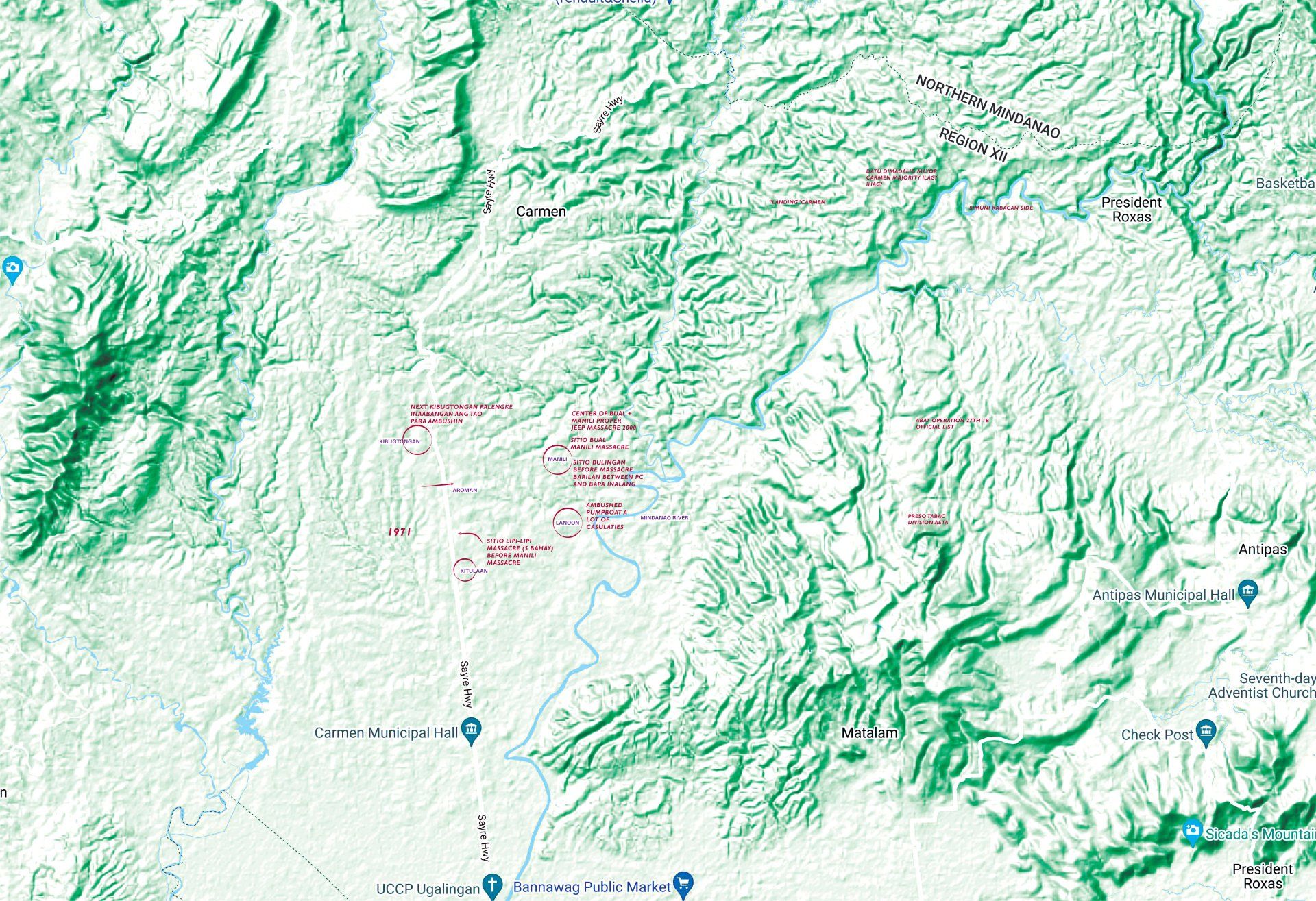
Manili, Carmen
North Cotabato
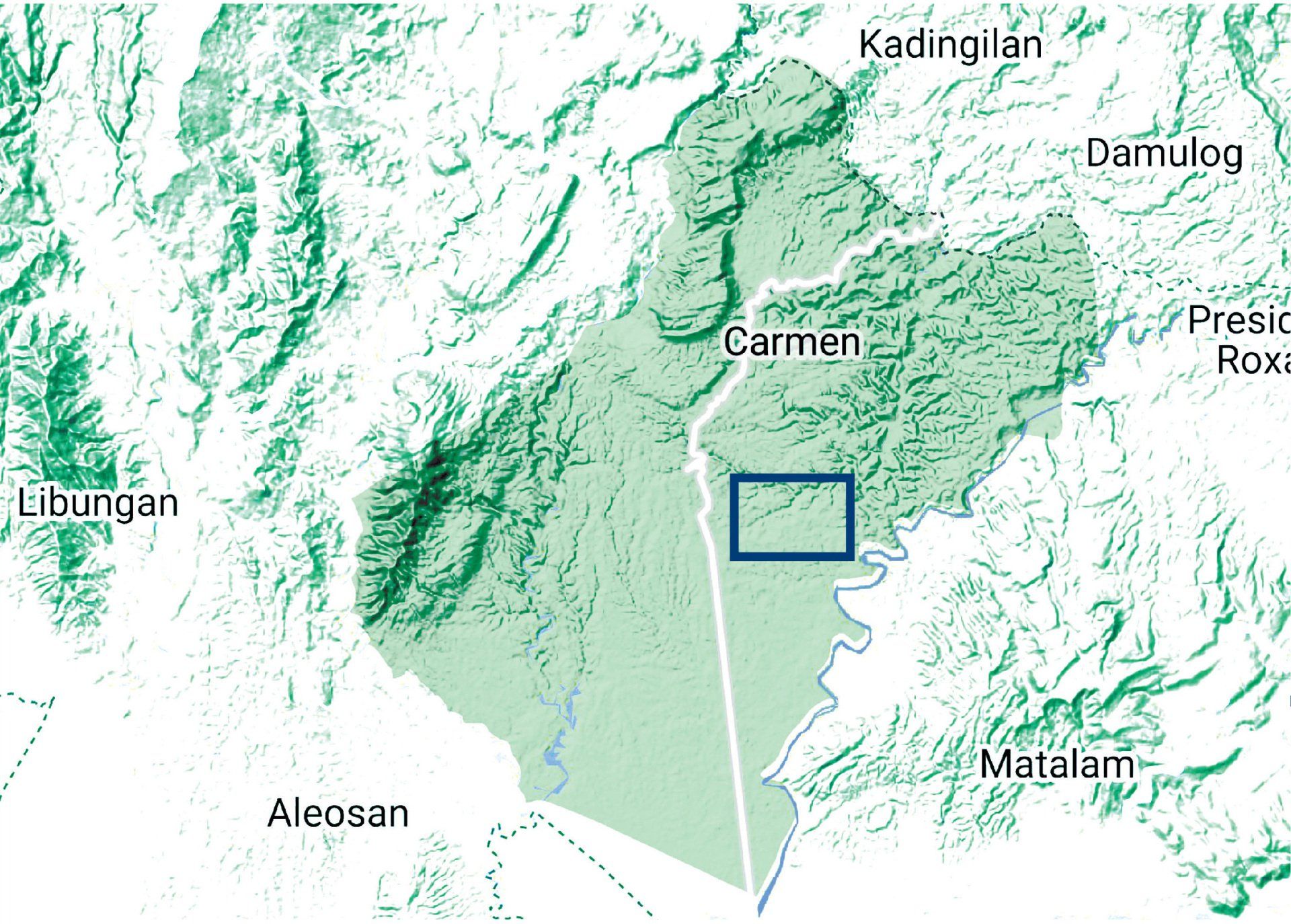
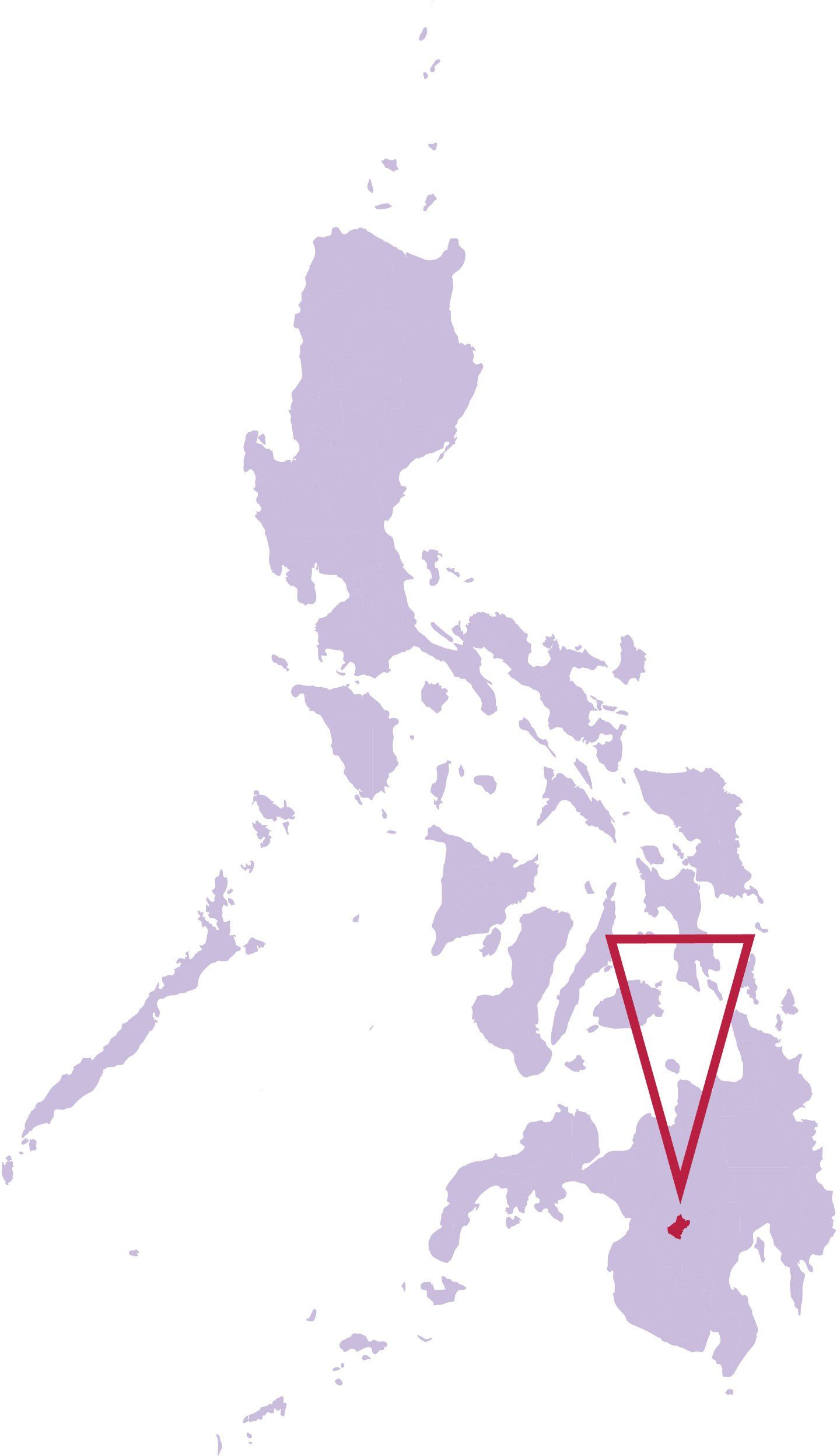


Manili, Carmen
North Cotabato
All Rights Reserved | Weaving Women's Voices
